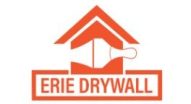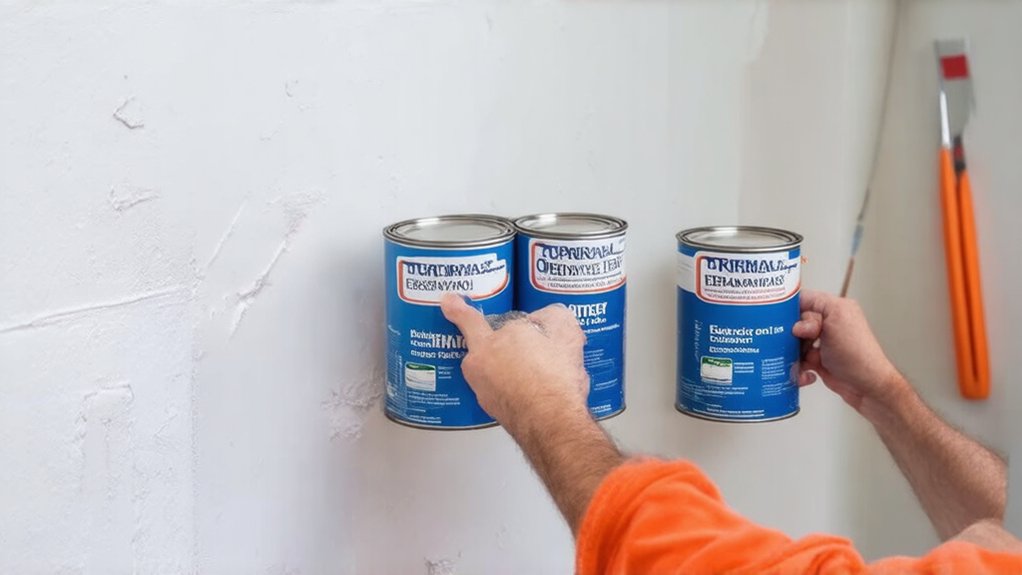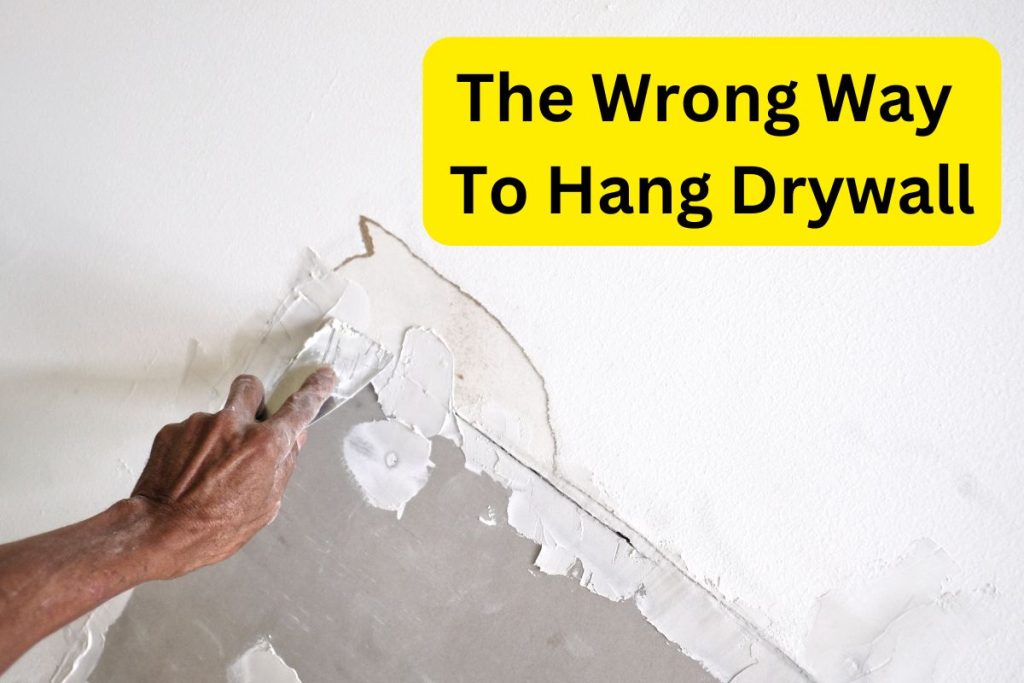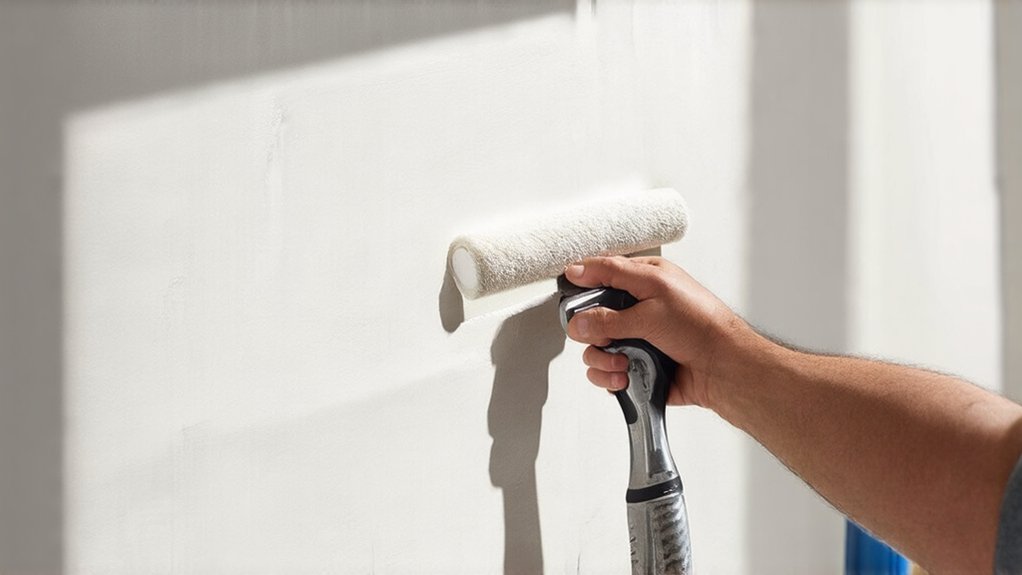When priming new drywall, you'll want to choose wisely. Water-based primers work well for most surfaces, while oil-based options excel at sealing porous areas. Consider your wall's specific condition—look for imperfections that might require a high-build primer. Quality matters more than price, so invest in a product that'll create a smooth, uniform surface. Your primer sets the stage for a professional paint job that'll look stunning and last longer.
Understanding Drywall Surface Characteristics
When you're preparing to paint new drywall, understanding its unique surface characteristics is crucial for achieving a professional-looking finish. Drywall surfaces aren't perfectly uniform; they feature subtle texture variations and inconsistent finish smoothness that can impact paint adhesion and appearance.
You'll want to carefully inspect the surface for joint compound residue, minor imperfections, and uneven areas before priming. Recognizing these intricate characteristics helps you select the right primer and preparation techniques. By paying attention to your drywall's specific surface qualities, you'll guarantee a smoother, more consistent paint application that looks polished and professional. Residential drywall services in Erie, PA emphasize the importance of proper surface preparation for optimal painting results.
Types of Primers for New Drywall
Although new drywall presents unique priming challenges, selecting the right primer can alter your painting project from frustrating to fantastic. You'll want to ponder water-based primers for their quick drying time and easy cleanup, which meet most drywall priming requirements. Drywall installation experts in Erie recommend carefully preparing surfaces before applying any primer to ensure optimal adhesion and finish.
Alternatively, oil-based primers offer superior stain blocking and help seal porous surfaces effectively. Shellac-based primers provide exceptional coverage and work wonders on tough stains, though they're more expensive.
When evaluating primer longevity considerations, remember that quality matters more than price. Choose a primer that matches your specific wall conditions and painting goals, ensuring a smooth, professional finish.
Primer Selection Based on Wall Condition
Because drywall surfaces can vary substantially, selecting the right primer requires careful assessment of your specific wall conditions. You'll want to evaluate potential imperfections like minor cracks, uneven textures, or previous repair work before choosing your primer.
When undertaking proper surface preparation techniques, inspect the drywall thoroughly for any signs of damage or inconsistency. Some walls might need a high-build primer to smooth out rough areas, while others could benefit from a standard bonding primer.
Your goal is matching the primer to your wall's unique characteristics, ensuring a flawless paint finish that looks professional and polished.
Product Performance and Quality Considerations
After carefully evaluating your wall's unique characteristics, you'll want to focus on the primer's performance and quality metrics that directly impact your painting project's success. Look for primers that offer superior finish durability and exceptional application efficiency.
High-quality primers not only seal new drywall effectively but also create a smooth, uniform surface for your final paint color. You'll want to invest in a product that minimizes surface imperfections, reduces paint absorption, and provides excellent adhesion. Choosing a premium primer can save you time, effort, and potential future touch-ups.
Application Techniques for Optimal Results
Proper application techniques can make a significant difference in your drywall priming project, altering an ordinary paint job into a professional-looking finish. When using proper brush application, hold the brush at a 45-degree angle and apply even, smooth strokes.
For roller technique, use a medium-nap roller and work in "W" or "M" patterns to guarantee consistent coverage. Always start at the top of the wall and work downward, maintaining a wet edge to avoid streaking.
Keep your roller or brush slightly loaded with primer, preventing excessive drips or uneven application that could compromise your final paint result.
Common Mistakes to Avoid When Priming
The pitfalls of drywall priming can turn a promising home improvement project into a frustrating ordeal. Skipping primer steps or applying it incorrectly can lead to costly mistakes that compromise your paint job's quality and appearance.
Key errors to watch out for include:
- Failing to clean and sand surfaces thoroughly
- Using the wrong type of primer for your specific drywall
- Applying primer unevenly or too thinly
- Rushing the drying process between coats
Your meticulous attention to detail will guarantee a smooth, professional-looking finish that'll make you proud of your hard work.
Cost-Effective Primer Strategies for Your Project
Smart painters know that selecting the right primer doesn't have to drain your wallet. You'll find budget-friendly options that deliver professional results without breaking the bank.
Consider purchasing multi-purpose primers that work on different surfaces, reducing the need for multiple products. Look for sales at local home improvement stores and compare prices online to maximize your savings. Buying in larger quantities can also help you save money in the long run.
Prioritize quality over the cheapest option, as a good primer prevents costly repairs and guarantees a smoother, longer-lasting paint finish.
Frequently Asked Questions
Can I Skip Priming New Drywall if the Surface Looks Smooth?
You'll want to prime even if the drywall looks smooth. Skipping primer can lead to texture variations and uneven absorption, resulting in a patchy paint finish that'll make your walls look unprofessional and less polished.
How Long Should I Wait After Priming Before Painting Walls?
You'll want to wait about 1-3 hours for ideal drying time after primer application. Check the manufacturer's recommendations, as humidity and temperature can affect drying. Don't rush—letting the primer fully dry guarantees better paint adhesion and a smoother finish.
Do Different Rooms Require Different Types of Drywall Primer?
You'll want different primers based on moisture levels and texture considerations. Bathrooms need moisture-resistant options, while textured walls require specific primers. Your choice depends on the room's unique characteristics, ensuring a professional, cohesive finish that makes your space feel truly yours.
Will Primer Help Cover Minor Imperfections in New Drywall?
You'll find that primer helps minimize visible seams and improves paint adhesion, smoothing out those small imperfections. It's like your drywall's secret weapon, creating a flawless canvas that'll make your space look professionally finished and polished.
Can I Use Old Primer Left Over From Previous Projects?
Don't risk it! Check your primer's storage conditions and shelf life. If it's old, separated, or shows signs of spoilage, you'll want fresh primer to guarantee a smooth, professional-looking finish that'll make your project shine.



